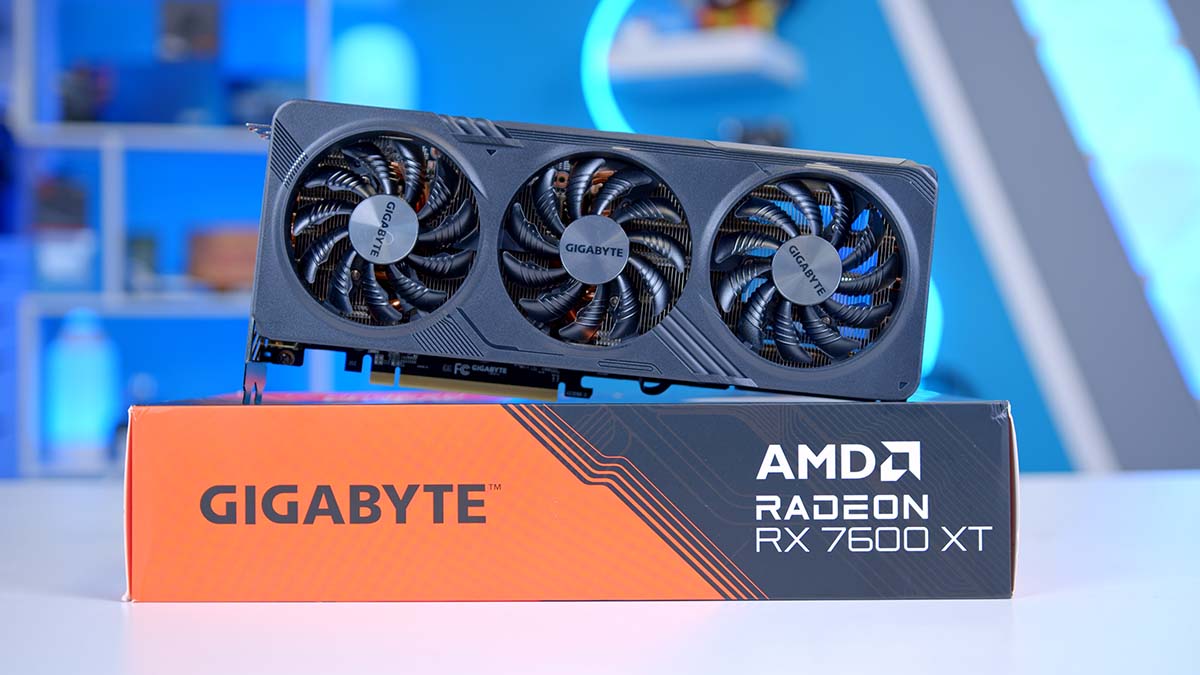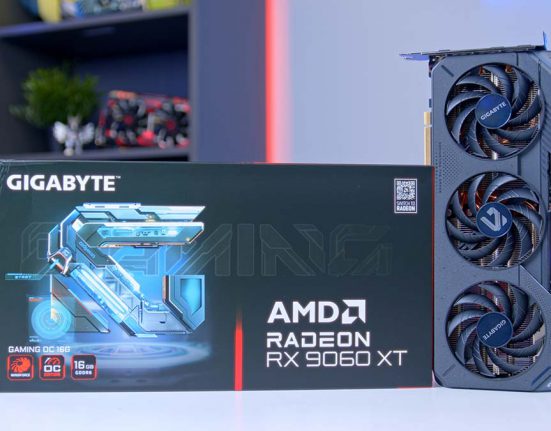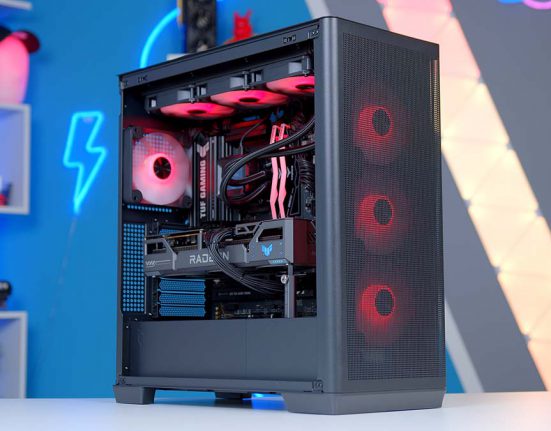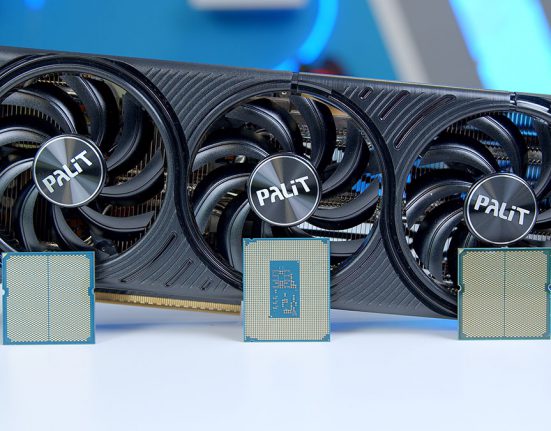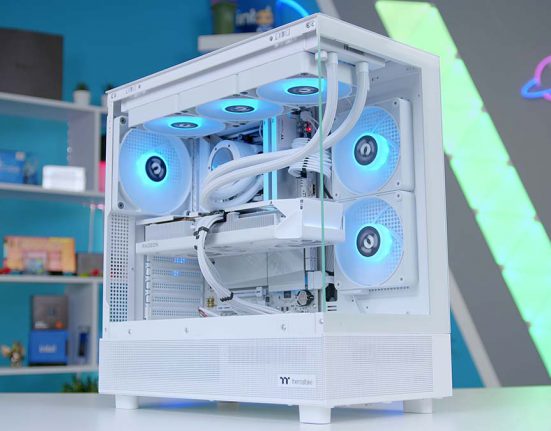The AMD Radeon RX 7600 XT is the fourth modern GPU to join the seemingly never-ending list of new graphics cards being brought to market by AMD and NVIDIA in 2024. Launched on the same day as the NVIDIA GeForce RTX 4070 Ti SUPER, NVIDIA’s second ‘SUPER’ GPU, it is safe to say that gamers are more spoilt for choice than ever when it comes to buying a new graphics card.
The RX 7600 XT actually has some interesting parallels, when compared to the RTX 4070 Ti SUPER. Those parallels being the objectives from the GPU manufacturer to build upon an already-proven design with a mid-life performance update, and small tweaks that look to make it a more attractive sales proposition.
In the case of the RX 7600 XT, this comes in the form of more video memory over it’s RX 7600 counterpart, representing a doubling of the available video memory. This looks to remedy the largest critique of the original RX 7600, where reviewers pointed to it’s memory capacity becoming constraining in modern titles at 1440p. This memory uplift is really the only notable change on the RX 7600 XT, and with it brings a relatively small $60 price bump, with an MSRP of $329.
Specifications
The RX 7600 XT shares practically all of it’s specifications with the RX 7600. The only real changes of note are to the video memory, and power consumption of the card. The memory bus remains the same on both cards, something which is likely to restrict the usefulness of the increased VRAM capacity, with the bandwidth on offer insufficient in most cases to allow for full saturation of the larger memory capacity.
The RX 7600 XT shares the same amount of stream processors and ray accelerators, which does hinder its performance across more intense games. Power consumption has increased slightly, up to 190W over the 180W of the RX 7600. This isn’t a particularly bad change, as the 10W isn’t likely to cause buyers to require a PSU upgrade.
| Specification | RX 7600 8GB | RX 7600 XT 16GB |
|---|---|---|
| Video Memory | 8GB | 16GB |
| Memory Bus | 128-Bit | 128-Bit |
| Base Clock Speed | 1.72GHz | 1.98GHz |
| Boost Clock Speed | 2.65GHz | 2.75GHz |
| Stream Processors | 2048 | 2048 |
| Ray Accelerators | 32 | 32 |
| Power Draw | 180W | 190W |
| MSRP | $269 | $329 |
We have seen a slight uplift to the base and boost clock speeds, with the RX 7600 XT offering 1.98GHz and 2.75GHz respectively. This does slightly improve performance, but the speed increases are so minor that any framerate uplifts aren’t gigantic.
The higher MSRP is a major sticking point for us. While $329 isn’t necessarily a huge rise versus the original RX 7600, the main area of contention for buyers will be the lack of hardware and performance improvements at this price point.
While there aren’t many other modern graphics cards that sit within the same price category as the RX 7600 XT, the standard RX 7600 is still a worthy competitor for those that aren’t interested in the extra VRAM.
The Increasing Trend of Mid-Life Refreshes
The truth of the matter is that AMD aren’t the only ones bringing a number of mid-life product refreshes to market. It is a trend that seems to be growing in popularity amongst chip makers Intel, AMD and NVIDIA. This was first apparent with the release of Intel’s 14th Generation of processors, chips which simply added more power, clock speed and (very occasionally) more cores to the existing 13th Generation of processors.
NVIDIA have been at it too, with a revival of the ‘SUPER’ branding (last seen in RTX 2000 series), across 3 different RTX 4000 cards. This SUPER range applies to existing product lines that NVIDIA has made certain improvements to. This helps to temper consumer expectations that products within this line-up are more aligned to a model derivative, than a whole new design.
This has been pretty successful so far for NVIDIA, the opposite to the outcome of Intel’s 14th Generation, with plaudits for the faster RTX 4070 SUPER, higher VRAM capacity on the 4070 Ti SUPER and price drops seen on the RTX 4080 SUPER.
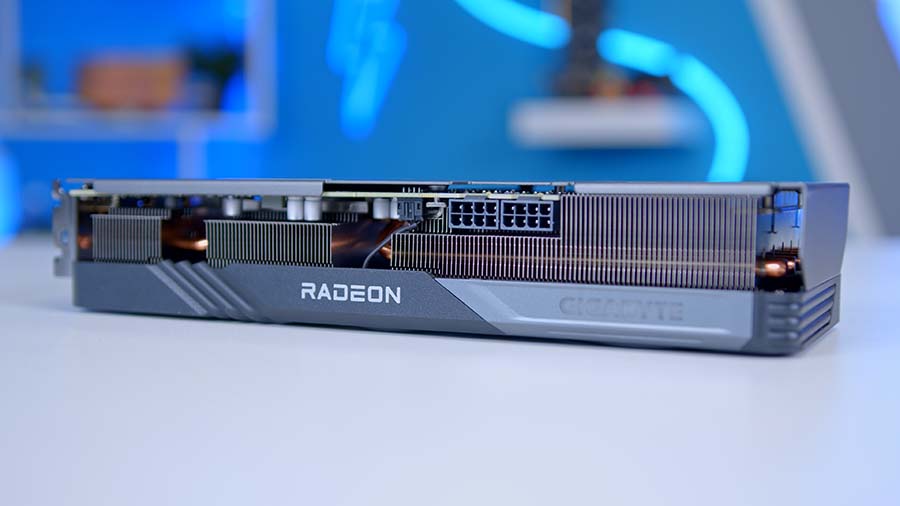
While some may feel as though the ‘refreshed’ designs are an easy way for manufacturers to eek out greater profits on existing designs, I do think they provide a good opportunity to fix mistakes made the first time around, and respond to customer feedback. The main, and often only, criticism of the RX 7600 was VRAM – a card that was too fast, and too powerful for it’s allotted 8GB, something AMD are clearly keen to try and fix here.
We have seen this before with the failed launch of NVIDIA’s 16GB RTX 4060 Ti, a card that previously landed with just an 8GB capacity, but not at this level of price competitiveness. The 16GB RX 7600 XT lands in at just $329, a $60 increase over the 8GB design, while undercutting the RTX 3060 Ti by a staggering $70. In fact, this card is more aligned at MSRP with NVIDIA’s standard, $299 MSRP RTX 4060.
Gigabyte RX 7600 XT Gaming OC Design
As far as design goes, Gigabyte have done a solid job in applying their pretty popular Gaming OC cooler to the RX 7600 XT. The triple-fan design is surprisingly compact, easy on the eye, but somewhat restrained compared to other GPU options on the market.
Five gold heat pipes span the length of the card and it’s three heatsinks, in a bid to efficiently move heat away from the GPU chip itself, located around 1/3rd of the way down the GPU.
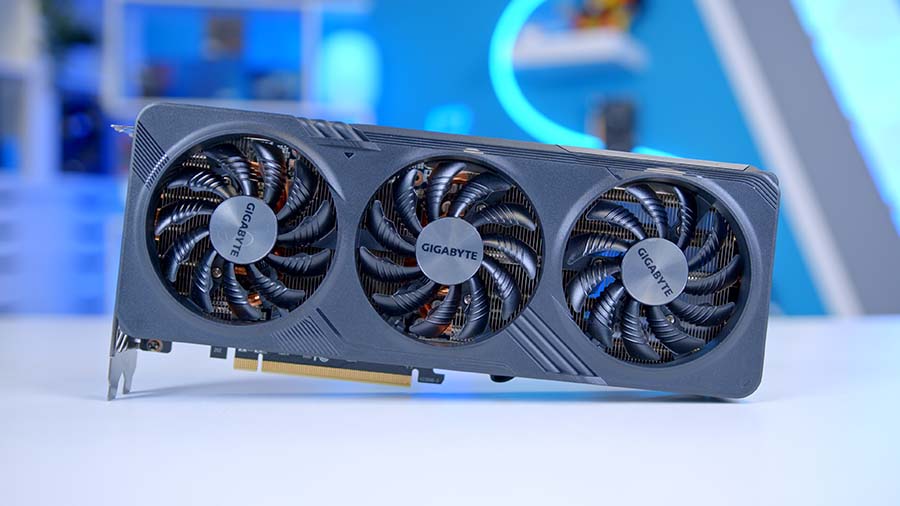
There is a small cut out on the backplate after the PCB itself ends, something that Gigabyte say will further increase cooling efficiency. The light-up, RGB Gigabyte logo on the right hand end of the card is a nice touch, and can be synchronised with other devices via the Gigabyte Control Center.
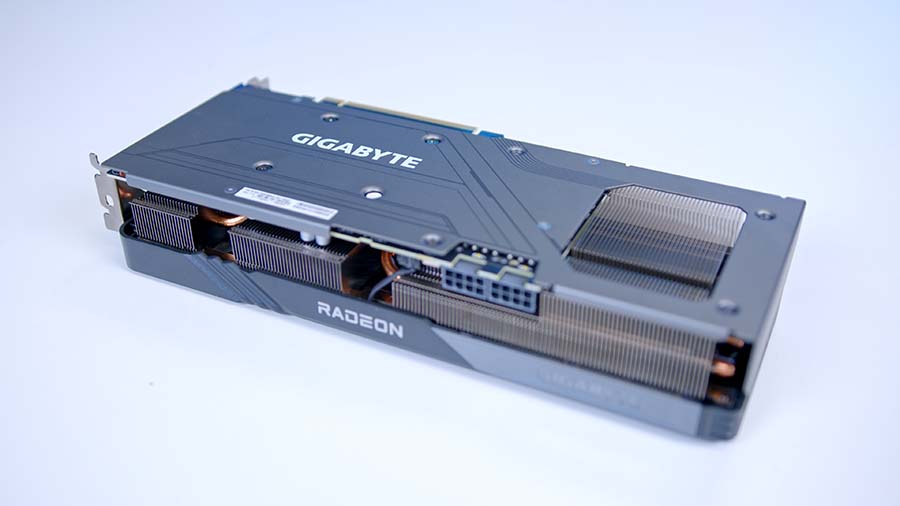
Overall, I like the design of the Gigabyte RX 7600 XT 16GB Gaming OC. It is a bit more restricted in its look, but the darker theme that this GPU offers will help it blend in well with other grey or black components within your PC build.
It would be nice to see some more RGB across the front of the GPU, but we understand that because this is an MSRP card, Gigabyte have held back on the lighting to make this GPU more affordable.
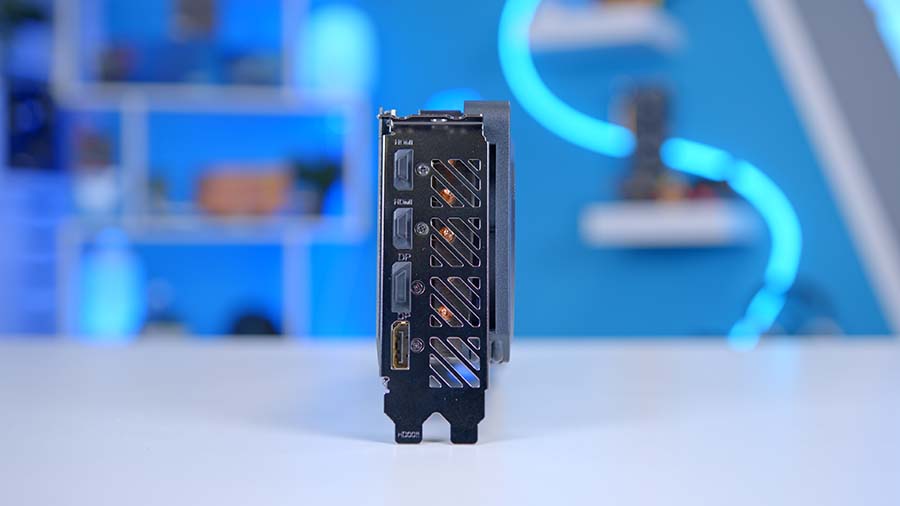
Performance
To assess the performance of the RX 7600 XT, our in-house benchmarker, Harry Coleman, has put this GPU through a GeekaWhat gauntlet of benchmarks. Our full benchmarking suite includes over 15 games that we use to test every component that we can get our hands on. We have a wide dataset of other graphics cards that allow us to compare the RX 7600 XT to competitor options. Below we’ve broken down the performance of the RX 7600 XT across a range of AAA and Esports titles.
Hogwarts Legacy
Settings: 1440p, Effects High, Material High, Fog High,Sky High, Foliage High, Post Process High, Shadows High, Textures High, View Distance High, Population High, Anti Aliasing TAA High, Windowed Fullscreen
In Hogwarts Legacy at 1440p high settings, the RX 7600 XT was able to offer a 2FPS lead against the original RX 7600, outputting an average FPS of 66. The increase in VRAM here doesn’t seem to be contributing much to performance. The RTX 4060 Ti which has half the amount of VRAM was able to offer a 74FPS average, putting it ahead of the RX 7600 XT

Starfield
Settings: 1440p, Shadow Quality High, Indirect Lighting High, Reflections High, Crowd Density High, Particle Quality High, Volumetric Lighting High, Motion Blur off, GTAO Quality High, Grass Quality High, Contact Shadows High VSync Off, DLSS/FSR OFF
Starfield is a much more demanding title, hence why we’re seeing a sub-60FPS from both the RX 7600 and RX 7600 XT. Again, the performance gains are not huge here. The RX 7600 XT hovered around the 58FPS mark, and wasn’t quite able to surpass 60FPS on average. The difference would be pretty noticeable at this level, primarily because framerates start to get choppy below 60FPS, and everything feels slower.
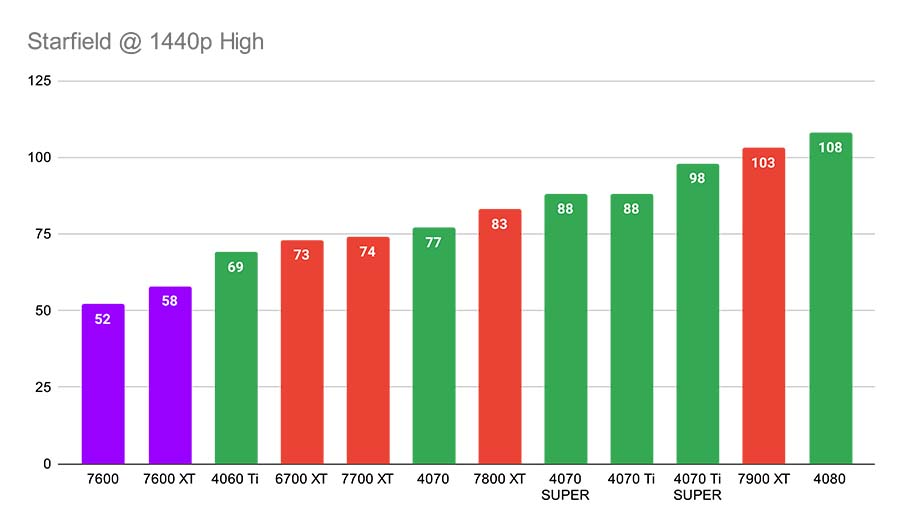
Cyberpunk 2077 (Ray Tracing & DLSS On/Off
Settings: 1440p, Shadow Quality High, Indirect Lighting High, Reflections High, Crowd Density High, Particle Quality High, Volumetric Lighting High, Motion Blur off, GTAO Quality High, Grass Quality High, Contact Shadows High VSync Off, DLSS/FSR: On/Off, Ray Tracing: On/Off, Textures: High
In Cyberpunk 2077 we’re seeing pretty much the same performance as we did in Starfield. Framerates are definitely weaker, and this is with ray tracing and FSR switched off. The RX 7600 XT was able to offer 62FPS on average, which is perfectly fine in terms of gameplay, but the performance bonus versus the RX 7600 was not impressive.
When ray tracing was switched on, performance across all of the AMD cards faltered. The RX 7600 and RX 7600 XT offered effectively unplayable performance, with 8FPS and 11FPS averages respectively. Ray tracing is a definitive weakness of these cards as shown by our results.
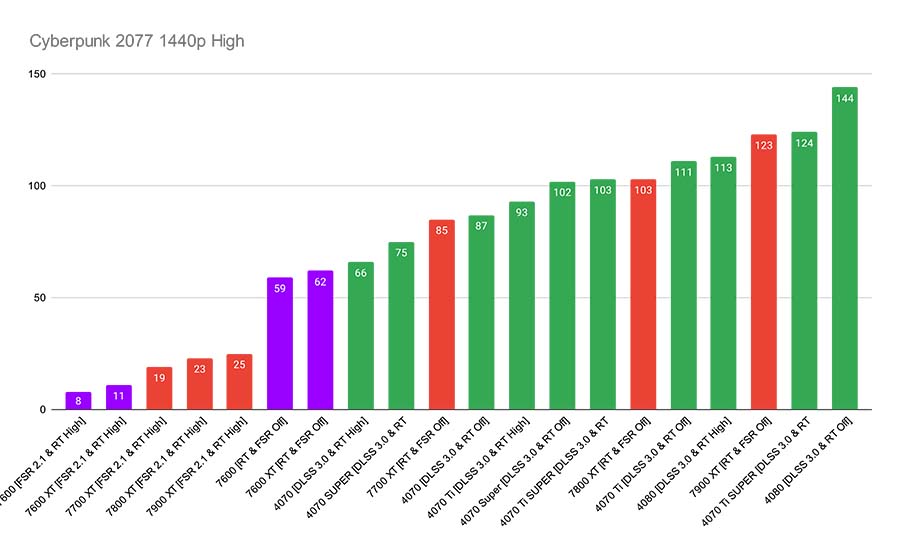
COD Warzone (DLSS Quality)
Settings: 1440p, Upscaling/Sharpening FSR 2.1/DLSS Quality (80 Sharpness), Texture Resolution High, Texture Filter Anisotropic High, Level of Detail High
In COD Warzone performance does improve here. The RX 7600 XT was able to offer very reasonable metrics across our benchmarking run, offering an average framerate of 131FPS. This was a 10FPS bump over the RX 7600, which was able to output 121 frames.
Performance is definitely better here, and this is primarily down to the fact that Warzone is far less demanding in comparison to AAA titles. However, FSR is putting in some work here, uplifting and stabilising performance where possible.
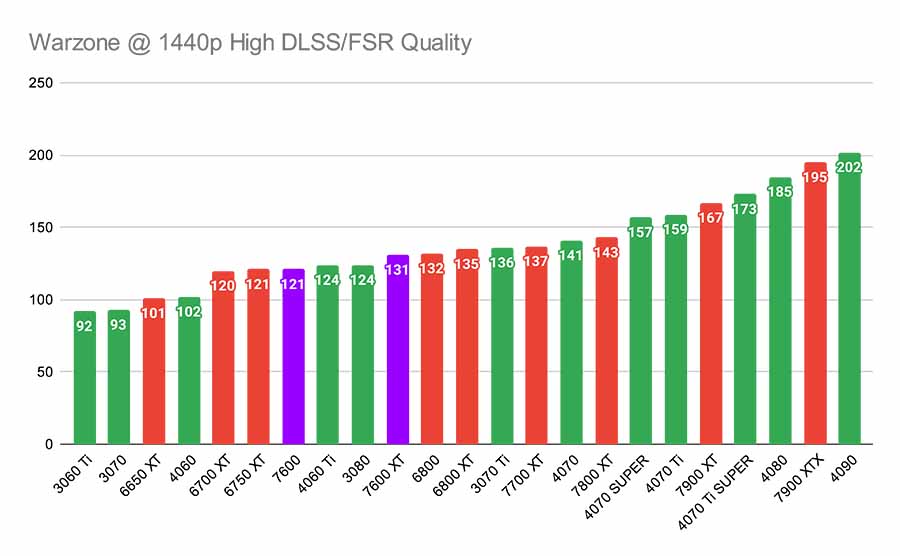
COD MW2 (DLSS Quality)
Settings: 1440p, Texture Resolution High, Texture Filter Anisotropic High, Level of Detail High
In COD MW2, we saw reasonable performance metrics from the RX 7600 XT, with this GPU sitting around the 141FPS mark. FSR was enabled within this benchmark, so this is bolstering frames to a degree. Our results were much closer together at the low-end, with the RTX 4060 Ti and RX 7700 XT sitting pretty close to the RX 7600 XT.
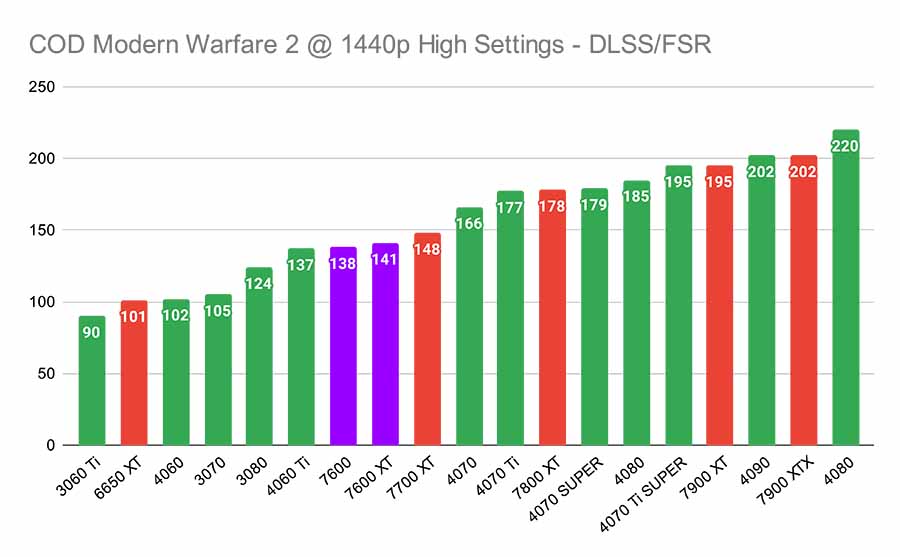
Apex Legends
Settings: 1440p, Anti-aliasing TSAA, Texture Filtering 8X, Model Detail High, VSync Disabled, Effects High, Ambient Occlusion Quality High
In Apex Legends, the RX 7600 XT was able to offer up 149FPS on average, putting it 4 frames ahead of the original RX 7600. Performance differences are pretty negligible in this game, primarily because framerates are so high. However, it is good to see that the RX 7600 XT is able to surpass the 144Hz sweet spot which is very important within a fast-paced game like Apex Legends.
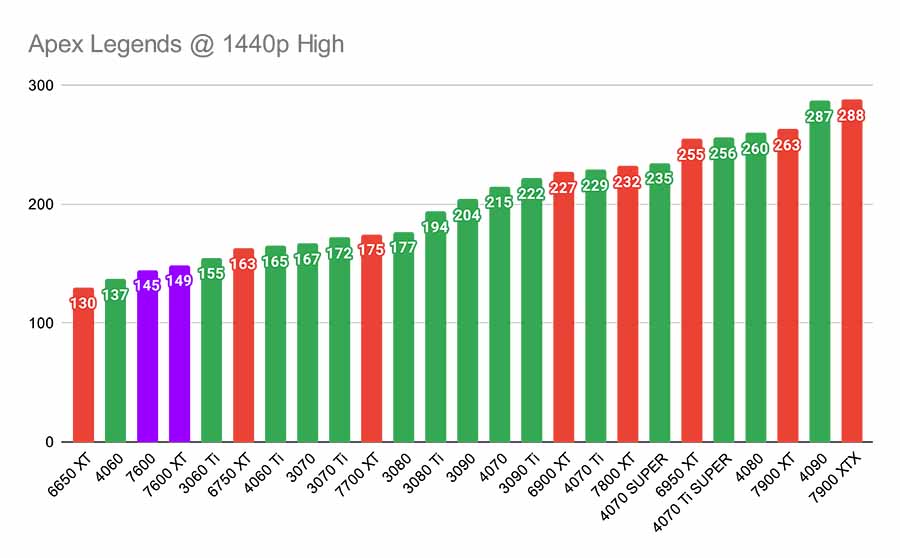
F1 2022 (Ray Tracing & DLSS Enabled)
Settings: 1440p, Ray Tracing Quality Medium, Lighting Quality Ultra High, Post Process High, Shadows Ultra Hight, Weather Effects Ultra High, Ambient Occlusion HBAO+, Asynchronous Compute On, Texture Streaming Ultra High, Anisotropic Filtering 8x, DLSS: Enabled
F1 2022 is an older title, but it serves as a good reference point for what ray traced gameplay can be like within an optimised title. The RX 7600 XT was able to offer 147FPS on average within this benchmarking run, which is 2FPS more than the RX 7600. Again, the increased VRAM is not really proving to be beneficial here, even at 1440p.
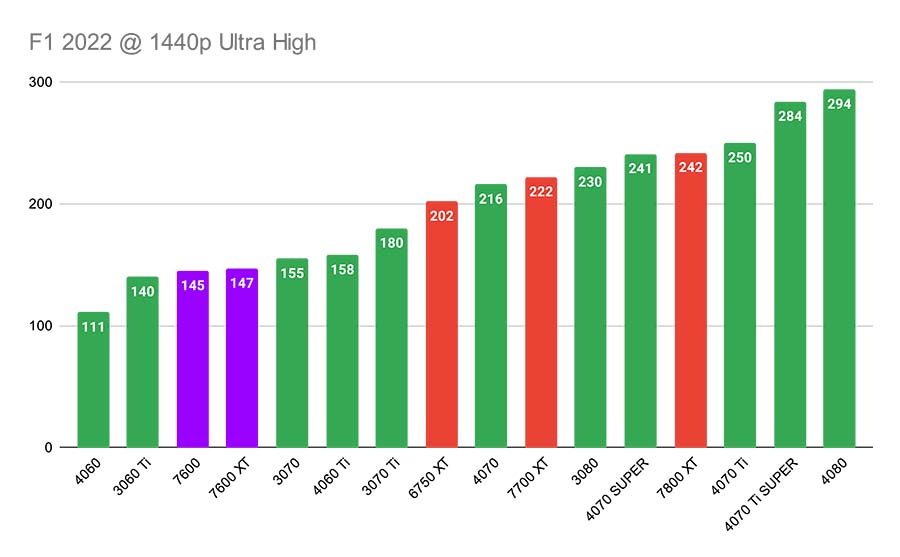
Fortnite
Settings: 1080p, Quality Low, Anti-aliasing & Super Resolution TSR High, Temporal Super Resolution Performance, View Distance Far, Textures Low
For our final benchmark we ran Fortnite at 1080p low settings to see how high framerates could fly. In this title the RX 7600 XT saw an average framerate of 276FPS. Most gamers aren’t going to need framerates this high, but this gives us an indicator of performance improvements across different GPU generations. As you can see from the graph, the RX 7600 XT offered 3 more frames versus the RX 7600, which is a very minute difference overall.
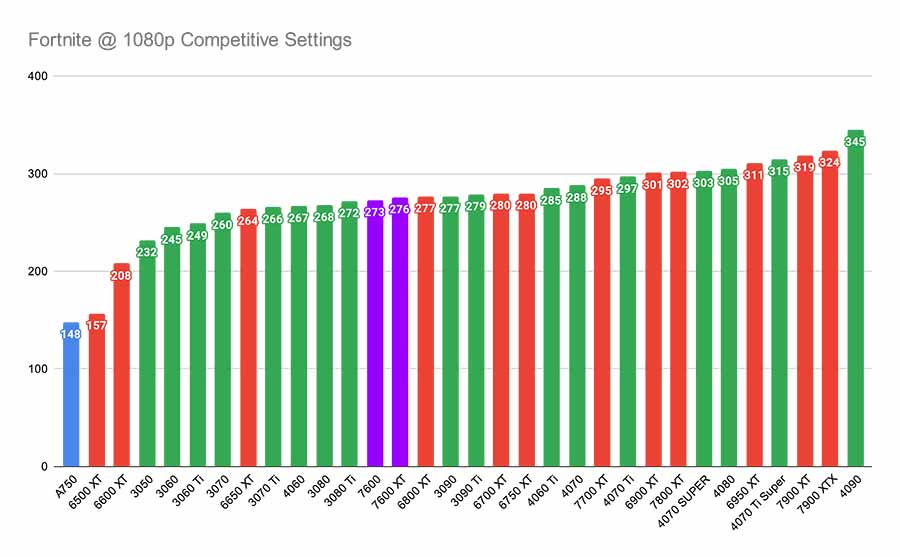
Is More VRAM the Answer?
Due to the increasing performance demands of modern games, a number of cards from the RTX 4000 and Radeon 7000 graphics cards ranges aren’t quite cutting it. For this reason, one of the big points of contention within the PC hardware space is VRAM. But is VRAM the answer to all of our gaming problems?
In short, no. As we’ve seen from the above benchmarks of the RX 7600 XT, and our RTX SUPER reviews, VRAM isn’t the fix that will magically improve performance across modern games. While more VRAM does improve metrics in certain situations, this will only go as far as the overall strength of the graphics card. Hardware specs like the memory bus, boost clock, and cores, all matter. These will ultimately affect the overall performance a graphics card is able to offer.
This is why a graphics card like the RX 7800 XT is such a solid option for AAA games and Esports titles. The 16GB of GDDR6 VRAM that this card has, is assisted by all of the additional hardware. It was relatively clear that the RX 7600 XT was going to struggle to offer more performance than the original RX 7600, because it is effectively the same GPU just with more VRAM on offer.
So while VRAM does help in instances where your GPU is bottlenecked and needs more capacity, the VRAM is only as good as the strength of the entire card.
Conclusion
Gigabyte RX 7600 XT Gaming OC
-
Features
-
Design
-
Performance
-
Value For Money
Summary
AMD’s Radeon RX 7600 XT offers 8GB more VRAM compared to the original RX 7600, in an attempt to alleviate graphical bottlenecking within modern games at higher resolution. Unfortunately, the RX 7600 XT doesn’t solve this issue with its increased VRAM capacity. We found this card to offer between 2-5 more frames within AAA titles and Esports games compared to its predecessor, the RX 7600.
While I do think Gigabyte’s Gaming OC model is a very competitive MSRP option, the RX 7600 XT is a difficult sell versus the original RX 7600, or even a Radeon RX 6750 XT, where performance is similar and the price is notably cheaper. If you’re looking to improve your gaming performance at 1440p, we would advise looking at some previous generation options that fall within a similar price category and offer well-rounded performance with more VRAM.
Pros
✅ Competitively priced
✅ Improves performance over RTX 4060
✅ Efficient power consumption
Cons
❌Not better than RX 7600
❌ VRAM barely helps performance
❌ Ray tracing performance


